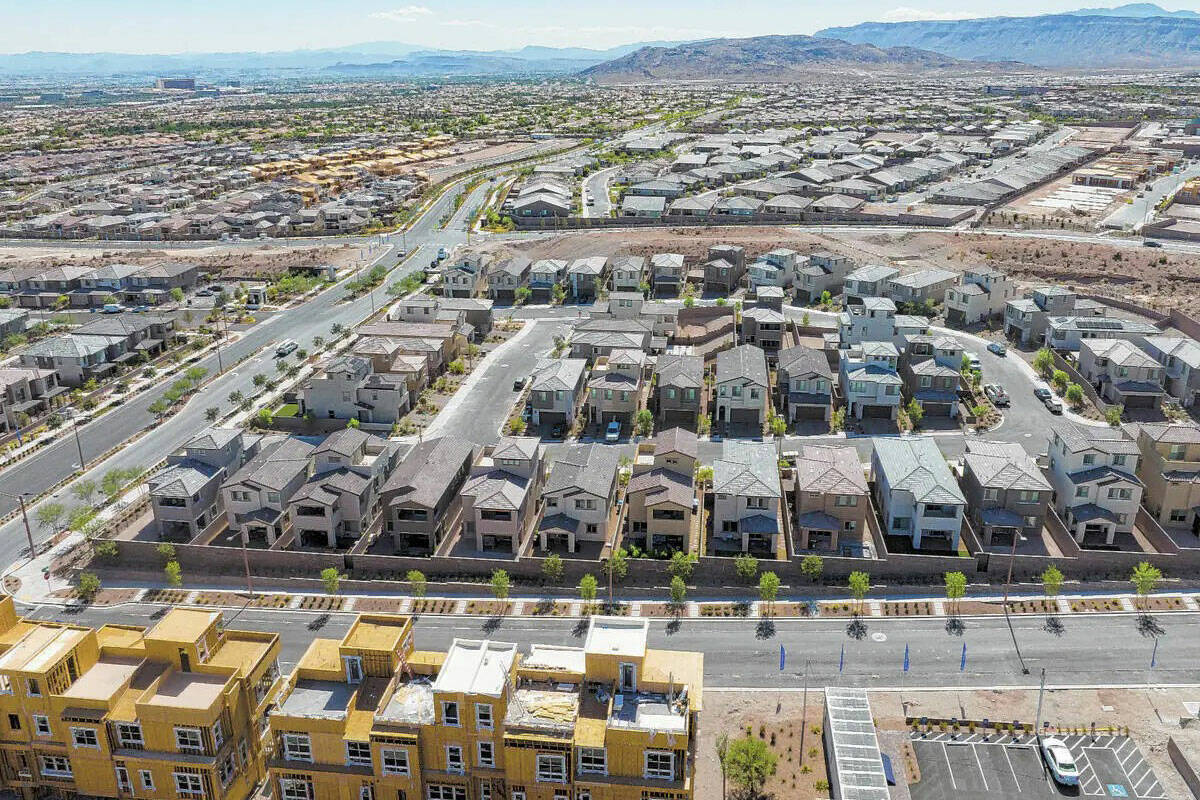Heat islands are making Vegas’ summer more extreme, research shows
Desert summers are getting more severe, and Las Vegas’ urban planning isn’t doing it any favors. Sprawl across the valley ensures that heat isn’t felt equally in every neighborhood.
This phenomenon is known as urban heat island effect, where dark-colored city streets and buildings trap excess heat, especially in areas without appropriate tree cover and green spaces.
As Clark County works through its plan to reduce carbon emissions and combat climate change, Las Vegas is breaking all-time heat records and an increasing number of Nevadans are dying from heat illness.
“Even though everybody is exposed to extreme heat, the experience is very unequal depending on where you live and who you are,” said Ariel Choinard, coordinator of the Southern Nevada Heat Resilience Lab, which is focused on community education and finding local solutions. “There are pockets of town that are simply hotter than others.”
There are many causes of urban heat island effect, such as building homes too close together, reducing air flow, and a high volume of pavement that traps heat at the height of the day. Urban heat islands are less likely to cool off in the nighttime because they hold heat so well.
That’s certainly the case in Las Vegas. The National Weather Service has said the city is on track to have the most days on record where temperatures don’t dip below 90 degrees at night.
A 2024 mapping effort from science communications firm Climate Central showed there are 16,000 Las Vegas residents whose neighborhoods experience heat with an intensity of 9 degrees more than the rest of the city.
Certain areas were identified as well by the 2022 Southern Nevada Urban Heat Mapping Project, which enlisted volunteers to collect data around Clark County. East Las Vegas, North Las Vegas and downtown Las Vegas can experience temperatures up to 11 degrees hotter than other parts of the region, according to the findings.
Those areas include historically Black and Latino neighborhoods, where there are often fewer trees and parks.
“Our messaging needs to get out in multiple languages like Spanish and Tagalog,” said Choinard, whose lab is studying whether campaigns promoting the county’s cooling centers are reaching those most vulnerable to heat. “And it needs to come from sources that people trust.”
Desert cities of a broiling future
Steffen Lehmann, an architect who runs UNLV’s Urban Futures Lab, said Las Vegas has slowly begun to design some areas in a way that’s smarter for increasingly hot summers.
Mixed-use development, where stores, restaurants and residences are located within walking distance of one another, should be the focus of city planning going forward, he said. Projects like UnCommons in southwest Las Vegas and The District at Green Valley Ranch in Henderson are good examples, Lehmann added.
Much of the Las Vegas Valley is zoned solely for single-family homes, which only promotes car use and often doesn’t allow for adequate shade to reduce the urban heat island effect, he said.
Parks and so-called urban forests provide a critical cooling effect. In some cases, that fact can be at odds with programs that promote converting grass lawns in favor of rocks or turf, he said, made necessary by Western drought.
“What’s missing is walkability, continuous shade and new green spaces,” Lehmann said. “I think we could do much better.”
Contact Alan Halaly at ahalaly@reviewjournal.com. Follow @AlanHalaly on X.






















